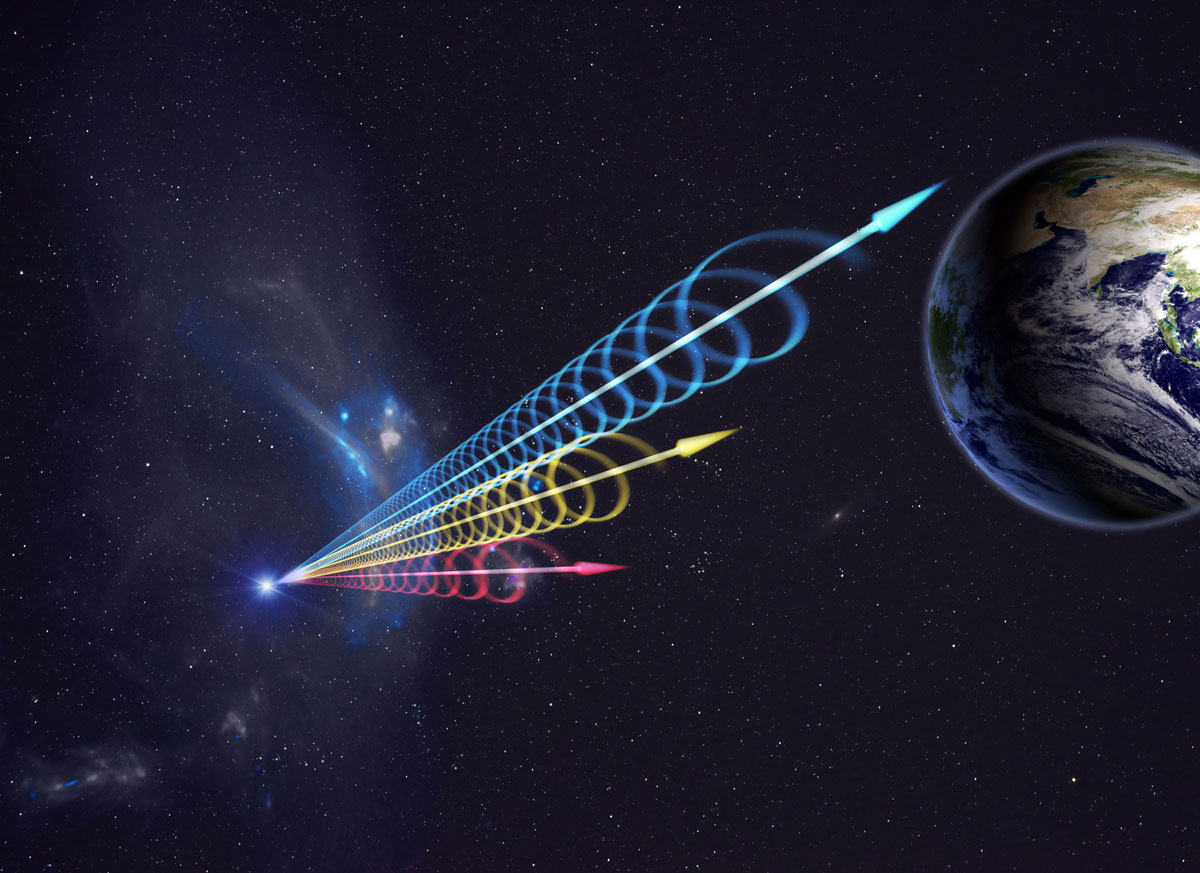Mysterious cosmic 'heartbeat' detected billions of light-years from Earth
Astronomers have discovered a repeating fast radio burst lasting 1,000 times longer than similar events that may come from a distant neutron star "on steroids."

Astronomers have discovered a strange and persistent radio signal from a distant galaxy. The discovery could help astronomers finally pinpoint the source of fast radio bursts (FRBs).
Most FRBs, which are strong bursts of radio waves from galaxies billions of light-years away, last just a few milliseconds before blinking out and are one-off events. This new signal — FRB 20191221A — lasts up to three seconds, making it 1,000 times longer than the average FRB, and also has the clearest repeated pattern discovered thus far.
"It was unusual," researcher Daniele Michilli of the Massachusetts Institute of Technology's (MIT) Kavli Institute for Astrophysics and Space Research said in a statement. "Not only was it very long, lasting about three seconds, but there were periodic peaks that were remarkably precise, emitting every fraction of a second — boom, boom, boom — like a heartbeat. This is the first time the signal itself is periodic."
Related: Mysterious fast radio bursts could reveal hidden matter around galaxies
The team behind the discovery of this strong, repeating radio burst includes researchers from the Canadian Hydrogen Intensity Mapping Experiment (CHIME)/ FRB Collaboration. Going forward, the researchers will attempt to catch further bursts from the same source that could help to more conclusively reveal what is causing these FRBs.
Additionally, they hope that FRB 20191221A could be used as a type of "astrophysical clock" thanks to its highly reliable periodicity. As the frequency of this burst will change as the source moves away from Earth, the changes could be used to measure the expansion of the universe.
Related: Discovery of second repeating fast radio burst raises new questions
Breaking space news, the latest updates on rocket launches, skywatching events and more!
Since they were first discovered in 2007, FRBs have been a mystery to astronomers who have been able to track these bursts to their galaxy of origin but have not discovered the precise source of emission.
The leading suspects believed to be responsible for the emission of FRBs are types of neutron stars called radio pulsars and magnetars, and this discovery seems to indicate this theory is correct.
"There are not many things in the universe that emit strictly periodic signals," Michilli said in the statement. "Examples that we know of in our own galaxy are radio pulsars and magnetars, which rotate and produce a beamed emission similar to a lighthouse. And we think this new signal could be a magnetar or pulsar on steroids."
Pulsars are neutron stars that spin rapidly and blast out intense radiation, while magnetars are stellar remnants with extremely powerful magnetic fields. All types of neutron stars form when massive stars reach the end of their lives, run out of fuel for nuclear fusion and can no longer support themselves against gravitational collapse. This results in a massive supernova explosion that leaves behind a cosmic remnant, a neutron star so dense that one teaspoon of its constituent material would weigh 8.8 trillion pounds (3.9 trillion kilograms).
The study of FRB 20191221A could help astrophysicists better understand these objects in general.
The future is bright for FRB detection
The signal FRB 20191221A was first detected by CHIME on Dec. 21, 2019, and its unusual nature was immediately spotted by Michilli as he observed the incoming data.
When the MIT researcher and his teammates analyzed the pattern of this signal from a distant galaxy they found similarities with emissions from radio pulsars and magnetars closer to home in the Milky Way.
There is one key difference between FRB 20191221A and signals from these objects within our galaxy, however, the former is over a million times brighter than the latter.
Michilli believes that the highly luminous flashes of FRB 20191221A could indicate that the radio pulsar or magnetar emitting them is usually much less bright. This could mean that some unknown mechanism or event has caused it to emit a train of brilliant bursts, in an unusual three-second window.
CHIME — an interferometric radio telescope made up of four large parabolic reflectors — continuously scans the sky over Earth as our planet rotates and was fortunately positioned just right to catch this rare burst.
The instrument, an interferometric radio telescope made up of four large parabolic reflectors, is no stranger to spotting FRBs. Since it commenced operations in 2018, it has spotted hundreds of these bursts.
"CHIME has now detected many FRBs with different properties," Michilli said. "We've seen some that live inside clouds that are very turbulent, while others look like they're in clean environments. From the properties of this new signal, we can say that around this source, there's a cloud of plasma that must be extremely turbulent."
Michilli added that future telescopes could detect thousands more FRBs each month and hopes that periodic signals like FRB 20191221A could be amongst them.
"This detection raises the question of what could cause this extreme signal that we've never seen before, and how can we use this signal to study the universe," Michilli concluded.
The team's research was published on Wednesday (July 13) in the journal Nature.
Follow us on Twitter @Spacedotcom or on Facebook.

Robert Lea is a science journalist in the U.K. whose articles have been published in Physics World, New Scientist, Astronomy Magazine, All About Space, Newsweek and ZME Science. He also writes about science communication for Elsevier and the European Journal of Physics. Rob holds a bachelor of science degree in physics and astronomy from the U.K.’s Open University. Follow him on Twitter @sciencef1rst.


